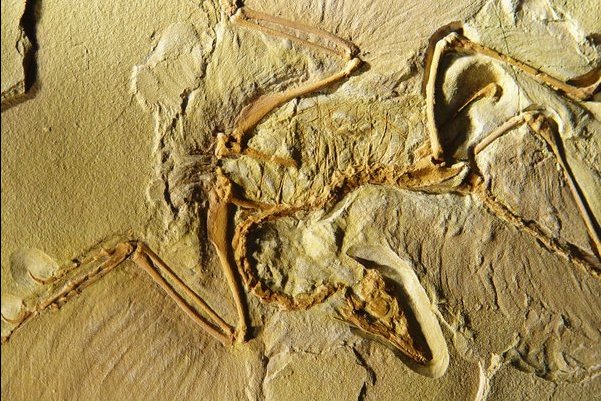DB: Bastian's (~ 10 year old) question at the Burke Museum Dino Day: Did dinosaurs use tools?
Paleontologist response: That seems unlikely, they were reptiles, not like us.
Bastian: Crows use tools.
DB: Moment of silence followed by heated debate about brain to body ratio between paleontologists, ending in: That is a VERY good question, and I could get tenure if I answered it.
SI: That is about as awesome as it gets.
Scott: ... teeth, claws and eggs are tools, I would posit! ... Sebastian, let's define tools in an evolutionary biology context, beyond the crow's tool use comparison; (cow birds learn song, and mate by it - with parallels to language learning, evolutionarily). Is language a tool?
DB: Bastian's next argument was from the scarcity of fossils, we don't know the range of brain sizes in dinosaurs, so he bets on probabilistic grounds that there were tool-using dinosaurs. This spawned a secondary debate among the paleontologists how we could recognize dinosaur tools if we found them; how much tool preparation do crows and parrots do?
HS: so how would you answer the question? a dinosaur that died and was fossilized still clutching something that could only make sense as a tool? a pattern of intentional scratches that could only be made by a stick and not claws or teeth? a carnivore which lacks any built-in apparatus to catch the prey they were demonstrably eating?
DB: One sharp grad student argued that crows are dinosaurs, so yes, they do use tools, but that they are smarter than dinosaurs that lived before the K-T boundary event (perhaps from evolutionary pressure from mammals).
Scott: Are biological adaptations tools? an argument could be made ... wings, teeth, claws and eggs
JA: And I would argue dinosaurs are birds...
Scott: Ah, archaeopteryx ... I find this image somehow very beautiful ... http://www.fossilmuseum.net/fossilpictures-wpd/Archaeopteryx/Archaeopteryx.jpg ... fossilized, biological, tool development before our very (toolish) eyes.
HS: I think "tool" is a mental adaptation, not a physiological one. a claw is a tool, it's true, but the sense of the question being asked is that of using external objects by choice ,as distinct from having a non external tool built in. sea otters use rocks to break into shells, while most creatures use beaks or claws.
HS: I think there's something useful in the bird/dinosaur distinction. for example, modern birds don't have teeth, and do have beaks, while dinosaurs are the reverse. modern birds have wings, possibly vestigial, while only a few dinosaurs did. I don't think it's clear whether all dinosaurs were warm blooded or not, while all modern birds are. same for feathers. I think what this means is that birds and dinosaurs are distinct, but members of a common category that subsumes them both, but excludes mammals, amphibians, reptiles, fish, etc.
KS: A "tool" is an abstraction. A generalization of a pattern that then finds the ability to adapt something in the environment to thatt pattern but in a specific manner.
EE: Your kids are awesome.
DB: Scott MacLeod - If we claim all morphological features are tools, we lose the useful distinction between creatures that use external tools and those that don't. If a clamshell is a tool, if cellulose in a tree trunk is a tool, if enzymes to digest milk are a tool, then we need a new word for things that weren't grown by the organism which the organism uses to accomplish its goals (with a caveat about goals and intentionality for non-conscious organisms). So, I like to keep "tool" meaning something extrinsic to the organism. Stephanie Leary please weigh in here.
AL: Go Bastian!
Scott: More later, but here's the Apple Dictionary V. 2.x definition of 'tool' ... "a device or implement, esp. one held in the hand, used to carry out a particular function : gardening tools" ... adaptable to claw, but not necessarily egg ...
KS: Well but an artificial limb is a tool but it is hardly "held in one's hand'. Similarly a clamshell IS a tool when it is used to carve soft wood.
DB: KS - A clamshell is a tool for anyone but the clam. Cellulose is a tool for anyone but the tree.
DB: Scott MacLeod - I don't think part of an organism can be called a device or implement. Your definition rules out claws.
KS: what about flowering plants that tske advantage of existing efields in the atmosphete?
Scott: I see dogs digging with the claws/nails on their paws as similar to a 3 prong 'claw' for gardening, for example ... both are devices and implements ... and the claws of turtles, moles, too ... the list is long ... And turtles seem to dig with their forelimb 'tools'/claws, and then plant their eggs in the sand, possibly similarly to my using the 3 prong, gardening 'claw' and then putting seeds in the ground ... I think body parts, selected for by evolution by natural selection, can be defined as tools (in my opinion) ... I'm still appreciating Sebastian's reply as well as the question itself ... So turtles, a kind of dinosaur, loosely defined may use their own intrinsic bodypart tools, and crows extrinsic ones ... Homo faber is not as unique as we might like to think in terms of tool use ... yet further research into evolution and tools is clearly a good idea ... Here's the wiki, evolution, subject page at MIT OCW-centric World University and School ... http://worlduniversity.wikia.com/wiki/Evolution ... Yea, Bastian!
... and about Archaeopteryx's significance: http://en.wikipedia.org/wiki/Archaeopteryx ... are wings, feathers and claws 'tools,' as adaptations?
...





No comments:
Post a Comment